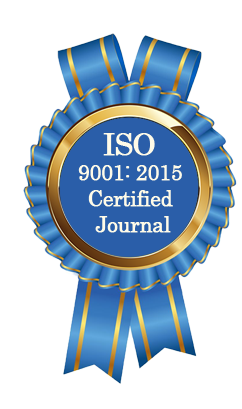| All | Since 2020 | |
| Citation | 105 | 60 |
| h-index | 4 | 4 |
| i10-index | 3 | 2 |
WJAHR Citation 
Login
News & Updation
Best Article Awards
World Journal of Advance Healthcare Research (WJAHR) is giving Best Article Award in every Issue for Best Article and Issue Certificate of Appreciation to the Authors to promote research activity of scholar.
Best Article of current issue
Download Article : Click here
Indexing
Abstract
RISK FACTORS FOR BRONCHIAL ASTHMA AMONG PRESCHOOL CHILDREN IN MOSUL CITY
Dhilal Shahin Ali* and Sahar Elham karany
ABSTRACT
Background: Childhood bronchial asthma is a common, complicated, long-term inflammatory disease of the lower respiratory tract. Often characterized by intermittent blockage of expiratory airflow and respiratory symptoms such as coughing, chest tightness, wheezing, and dyspnea. Asthma and related bronchopathies in children can be caused by a variety of factors, including genetics, pulmonary immaturity, viral infections, environmental pollution, and insults (both pre- and post-birth), during a critical developmental period. Objectives: Is to assess the risk factors for having bronchial asthma in preschool children aged less than 6 years in Mosul City. Methods: The study is a hospital based, observational, descriptive, case control study. It was conducted between the 20th of September 2021 to the end of February 2025 at Al Khansa’a and Ibin Sina Teaching hospitals in Mosul. The study included 400 children which were divided in to 200 asthmatic patients (the cases) and 200 non asthmatic patients (controls). The questionnaire includes three parts, part one for demographic information, part two for family and personal risk factors and part three for natal and post-natal risk factors for preschool bronchial asthma. Results: The mean age of the study participants was 4.53 ± 0.83 years with Male: Female ratio was 1.469. significant association and difference between cases and controls regarding the presence of one or both parents suffering from asthma (OR= 2.515, CI=1.234-4.217) or atopy (OR= 2.020, CI= 1.387-3.002), the presence of personal history of atopy (OR=2.681, CI=1.738-3.289), the presence of pets in the house (OR= 2.334, CI= 1.895-4.131), exposure to smoking (OR=1.853, CI=1.090-3.204) and patients’ history of more than three respiratory tract infection per year (OR=5.037, CI= 3.357-8.542), P value < 0.05 for all. Conclusion: In addition to clinical signs and symptoms, preschool bronchial asthma can be predicted by history of having one or both parents suffering from asthma or atopy, personal history of atopy, the present of house pet, smoking exposure and more than three respiratory tract infections per year. To fully examine how many factors, contribute to the development of childhood asthma, more researches are mandatory.
[Full Text Article] [Download Certificate]
